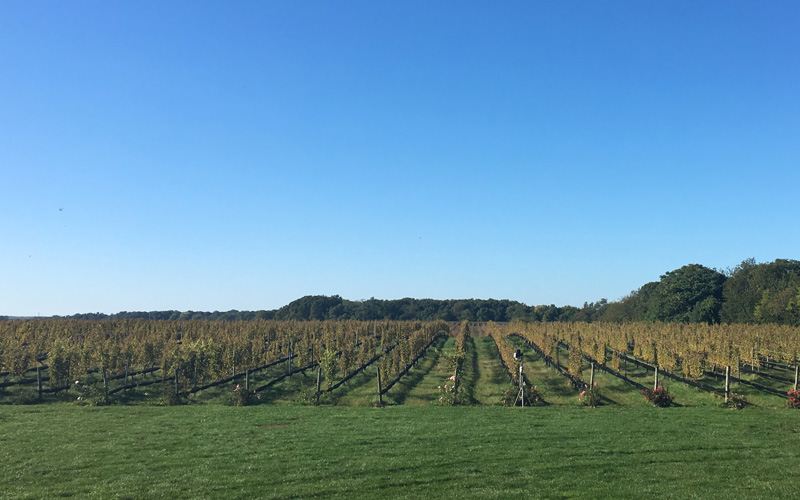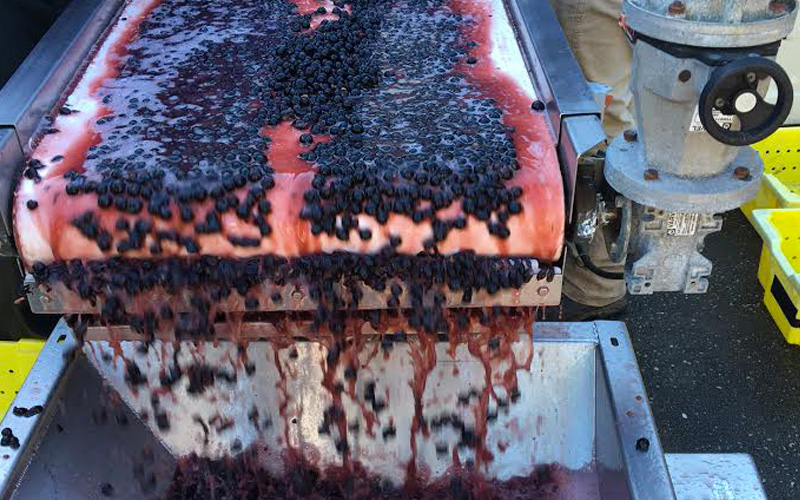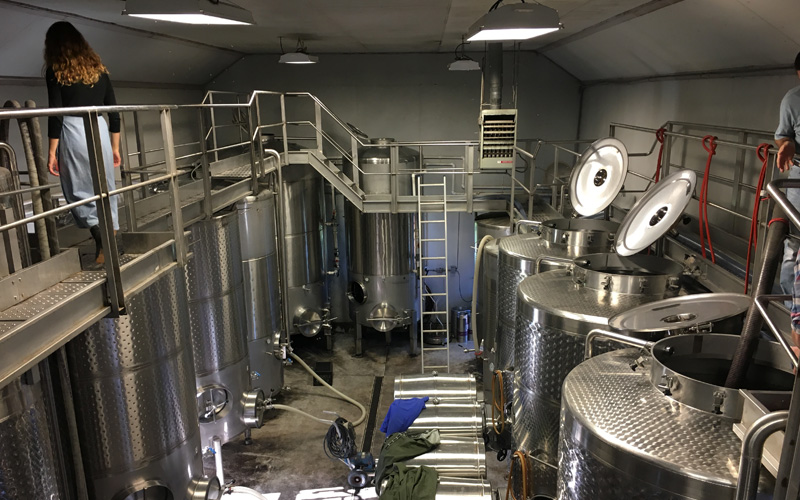Paumanok Vineyards is humming with machines. In late September in the midst of harvest, winemaker Kareem Massoud followed a tube that ran from the truck bed of recently harvested Merlot grapes, to an automated destemmer.
A little bit of juice washed over the white conveyor belt, followed by a wave of grapes. Seven men combed through the grapes as they passed, snagging the few stems the machine missed. The grapes were machine harvested before hitting the destemmer, essentially moving from vine to machine, then to another machine before being put in the tank.
Machine harvesting is faster and uses less manpower, but there is another benefit to machine harvesting that is more important, Massoud said over the steady hum of the destemmers: Machine harvested grapes taste better.
During the harvest of 2000, talk was going around that machine harvesting produced wine inferior to hand-harvested wine. Charles Massoud, Kareem’s father and the owner of Paumanok, heard the talk and watched YouTube videos of botched machine harvests. Paumanok had just invested in a new, $180,000 harvester. Charles couldn’t stop wondering, however, if the talk was true. So they put two wines to a blind test.
“The thought was either we sell the machine and we go back to hand harvesting, or we give a blind test a try and see what happens,” Charles told me over the phone. “Our expectation was that hand harvesting was going to be superior because of everything we were told and read at the time.”
A block of Cabernet Sauvignon was divided into two equal sections. On one side, the grapes were harvest by hand. On the other, the harvesting was done by machine. Everything up to that point was identical, as well as everything after that point. When the wines were ready, they set them up against each other.
“When we did the blind wine tasting, the first conclusion was that the two wines were in fact very close to one another,” Charles wrote in a blog post shortly after the tasting. “One was slightly more exuberant and more attractive and of course we figured it was the hand harvested lot. However when we unblinded them in a tasting, it was the other way around.”
Charles, his wife and Kareem thought that they had made a mistake. So they double checked the wines and re-tasted. The machine harvested wine once again prevailed.
There are a couple reasons for the improvement in taste, Charles speculates. First, Paumanok does a “negative harvest,” or the hand removal of bad fruit, before machine harvesting. Second, a machine can harvest a section of the vineyard, send it to a destemmer, then have the fruit ready for processing much faster than hand harvesting.
“If you do hand harvesting with people who don’t know what they’re doing, you can get terrible results,” Charles said. “If you do machine harvesting with a bad machine or bad operator you can get terrible results. But if you know what you’re doing with the machine and you have a good operator and do the negative harvesting before hand, then you get excellent results.”
Today, Paumonak makes wine with both hand-harvested and machine-harvested grapes. Kareem and Charles believe that some grapes are more suited to hand harvesting and whole cluster pressing — Paumonak’s Minimalist Sauvignon Blanc and Minimalist Chardonnay, for example.
But technology overall, Charles said, has been a boon for winemaking.
“I don’t know how old you are, but I’m 70 years old, and in my younger days, wines were not as good as they are today.”
Machine harvesting has allowed more wine to be produced at a high quality in more areas. Machines compensate for areas that lack the proper number of skilled laborers and can get more grapes harvested in a shorter time period. And they’re far from the only technology. Look to refrigeration, which has greatly improved the quality of wine being delivered to the end consumer, or the improvement of fermentation tanks. On the biological front, different types of yeast give winemakers more control of the overall project. Viticulture techniques, such as selective pruning and bird nets around the fruit, have improved the quality of the grapes.
“There’s this mentality today that everybody thinks going back to primitive methods in just about everything we do yields better results for absolutely no scientific reason,” Charles said. “There’s no evidence whatsoever that says that hand harvesting is better than machine harvesting even though lots of people say that it is.”
In the end, the proof is in the taste of the wines. Charles, Kareem and the rest of the Paumanok team invite you to taste each wine for yourself to decide. Which grapes are hand harvested and which are machine harvested have already been divvied out for the 2016 harvest, but Charles isn’t shy about letting people decide for themselves which is better.
“We’re totally happy with machine harvesting,” Charles said, “and we can repeat the trial for anybody if you want to have a bet.”



